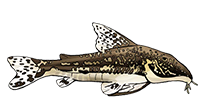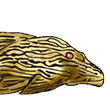natural history of paleatus
natural history of paleatus
Hi all
I am fascinated by the cool water habitat of C. paleatus. So, I keep trying to learn more abt their original environment. I found this article:
Distribution patterns of native freshwater fishes in Patagonia (Argentina)
http://tinyurl.com/2aj895
However, I am too cheap to pay the $30 to fetch the complete document. Has anyone read it, and can tell me where the paleatus were newly found?
thanks
Dan
I am fascinated by the cool water habitat of C. paleatus. So, I keep trying to learn more abt their original environment. I found this article:
Distribution patterns of native freshwater fishes in Patagonia (Argentina)
http://tinyurl.com/2aj895
However, I am too cheap to pay the $30 to fetch the complete document. Has anyone read it, and can tell me where the paleatus were newly found?
thanks
Dan
Last edited by danb on 06 Dec 2007, 14:23, edited 1 time in total.
- bslindgren
- Posts: 140
- Joined: 23 Jun 2007, 17:21
- I've donated: $25.00!
- My cats species list: 11 (i:0, k:0)
- Location 1: Prince George, BC, Canada
-
Mike_Noren
- Posts: 1395
- Joined: 25 Jul 2003, 21:40
- I've donated: $30.00!
- My articles: 1
- My images: 37
- My cats species list: 5 (i:0, k:0)
- Spotted: 9
- Location 1: Sweden
- Location 2: Sweden
They say the may have been transplanted, because it's a different drainage than they or any of the species they are associated with are otherwise found.
Release of captive fish into natural waters is common around the world - including in Argentina.
Wrt paleatus an additional complication is that there is considerable uncertainty about how many species are actually lumped under that name (definitely more than one), and which of them is the true paleatus.
In other words, it is possible that this is a separate species similar to paleatus.
The only way to solve these questions would be a population study & revision of paleatus. I believe there are people working on something like that.
Personally what I found most surprising was the low species richness of the area. Only 29 species of freshwater fish in Patagonia (pretty much the whole of Argentina south of Buenos Aires), out of which more than half are introduced and only one is endemic?
That is amazingly, even suspiciously, low. Even in recently glaciated areas of europe and north america there are individual lakes with more species than that.
Wrt this article I was also, as an aquarist, a bit disappointed that they did not specify the physiological parameters of the area. It would have been very useful to me to know maximum, minimum, and average temperatures and precipitation over the year, as well as pH and hardness, and ideally what aquatic vegetation exist in the area.
Release of captive fish into natural waters is common around the world - including in Argentina.
Wrt paleatus an additional complication is that there is considerable uncertainty about how many species are actually lumped under that name (definitely more than one), and which of them is the true paleatus.
In other words, it is possible that this is a separate species similar to paleatus.
The only way to solve these questions would be a population study & revision of paleatus. I believe there are people working on something like that.
Personally what I found most surprising was the low species richness of the area. Only 29 species of freshwater fish in Patagonia (pretty much the whole of Argentina south of Buenos Aires), out of which more than half are introduced and only one is endemic?
That is amazingly, even suspiciously, low. Even in recently glaciated areas of europe and north america there are individual lakes with more species than that.
Wrt this article I was also, as an aquarist, a bit disappointed that they did not specify the physiological parameters of the area. It would have been very useful to me to know maximum, minimum, and average temperatures and precipitation over the year, as well as pH and hardness, and ideally what aquatic vegetation exist in the area.
-
Bas Pels
- Posts: 2918
- Joined: 21 Dec 2006, 20:35
- My images: 1
- My cats species list: 28 (i:0, k:0)
- Spotted: 8
- Location 1: the Netherlands
- Location 2: Nijmegen the Netherlands
- Interests: Central American and Uruguayan fishes
Most certainly it weould, but do realize you hope for quite a lotMike_Noren wrote:It would have been very useful to me to know maximum, minimum, and average temperatures and precipitation over the year, as well as pH and hardness, and ideally what aquatic vegetation exist in the area.
Personally, I'm tracking the weather in Montevideo, Uruguay. This capital lies 400 km from Buenos Aires, naerly due east, and would thus be comparable to that of Buenos Aires.
However, BA had snow this yaer, M not - perhaps due to more oceanic influences.
I only look at averages for a day, and these can be (for Montevideo) as low as 3 degrees (once in 8 years) and as high as 37 (twice)
I keep paleatus I from 50 km from Montevideo, they are now at 12 degrees (unheated tank, unheated room, open window) but have been below 10




